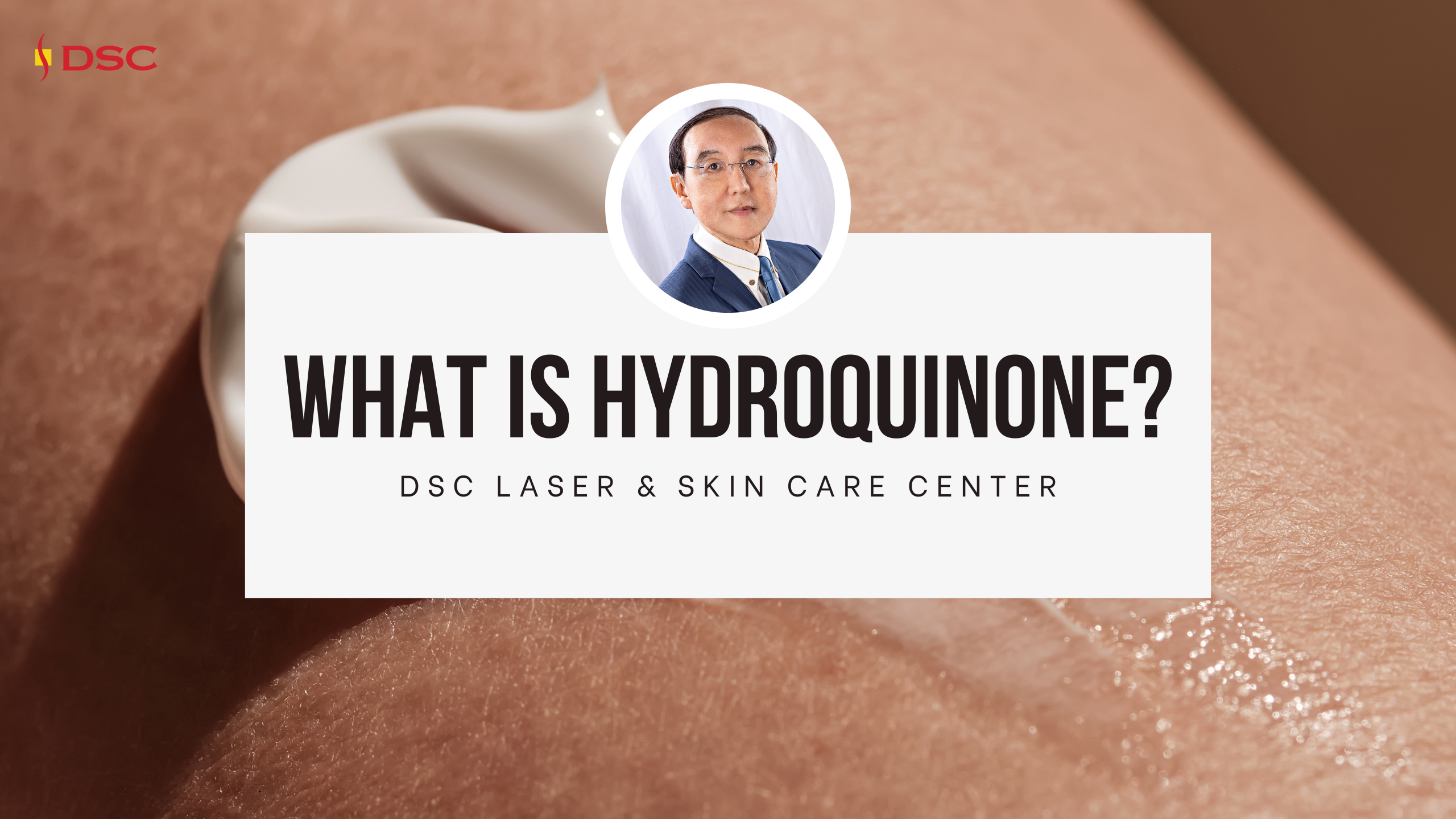If you have melasma pigmentation or you’re looking to treat your melasma pigmentation, you might have heard of hydroquinone. What exactly is hydroquinone then?
Hydroquinone is one of the strongest available topicals to treat melasma pigmentation and other types of pigmentation or hyperpigmentation. In the United States, it is generally only available from a medical provider or is dispensed with a prescription at higher concentrations. Different regulations apply globally — it is not available in the EU for cosmetic usage. This is because long-term usage of hydroquinone comes with the risk of exogenous ochronosis, which is the development of blueish-black pigmentation in areas of usage.
How does hydroquinone work?
Hydroquinone works by inhibiting tyrosinase, an enzyme that is a vital part of the process in which melanin is developed. Additionally, it also inhibits melanocyte (cell where melanin is produced) activity and the uptake of melanin by skin cells from melanocytes. While melanin is an important part of our skin because of its role in protecting us against harmful UV radiation, excessive exposure to UV radiation can lead to the formation of new pigmentation (due to melanin) such as melasma pigmentation, freckles, sun spots, actinic keratoses, and more. SPF plays an important role in preventing pigmentation from forming, but hydroquinone can help lighten and reduce unwanted pigmentation.
How to use hydroquinone?
Hydroquinone should be used under the supervision of a medical professional. It should be used for no longer than a span of a few months (e.g. 3-4), before cycling off and switching to a non-hydroquinone based pigment-inhibiting topical. Improperly long-term, continuous usage is what can lead to ochronosis. Non-hydroquinone pigment inhibiting topicals typically contain: alpha arbutin, licorice root, kojic acid, to name a few.
Read More: How Skincare Can Treat Pigmentation
Because these products can cause some irritation, especially with initial usage, titration may be necessary to introduce them into a skincare routine. This means gradually working up to daily application and only using the recommended amount. Take care when using in conjunction with other strong topicals such as retinoids, chemical exfoliants (glycolic acid, lactic acid, mandelic acid), or even other pigment-inhibiting products. Pair usage of any pigment-inhibiting topical with daily usage of broad-spectrum SPF for best results.
Read More: Why is SPF important?
Because of its strength, hydroquinone is one of the most recommended topicals to treat melasma, a notoriously difficult to treat benign pigmentation condition that has strong hormonal and genetic links. In some cases at DSC, it is prescribed prophylactically before strong laser treatments (such as for acne scarring or for deep resurfacing), to help mitigate post-treatment post-inflammatory hyperpigmentation. With proper usage and under supervision by our medical staff at DSC, hydroquinone can be an excellent tool in your arsenal for banishing stubborn pigmentation.
DSC Laser & Skin Care Center
www.dscbeauty.com
(626) 285-0800
info@dscbeauty.com
889 S. San Gabriel Blvd, San Gabriel, CA 91776
